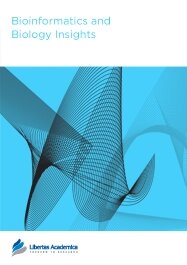

Publication Date: 20 Sep 2010
Type: Original Research
Journal: Bioinformatics and Biology Insights
Citation: Bioinformatics and Biology Insights 2010:4 85-97
doi: 10.4137/BBI.S5850

Histological and functional changes associated with involution in the mammary gland are partly regulated by changes in gene expression. At 42 d postpartum, Holstein cows underwent a period of 5 d during which they were milked 1X daily until complete cessation of milking. Percutaneous mammary biopsies (n = 5/time point) were obtained on d 1, 5, 14, and 21 relative to the start of 1X milking for transcript profiling via qPCR of 57 genes associated with metabolism, apoptosis/proliferation, immune response/ inflammation, oxidative stress, and tissue remodeling. Not surprisingly, there was clear downregulation of genes associated with milk fat synthesis (FASN, ACACA, CD36, FABP3, SCD) and lipid-related transcription regulation (SREBF1, SREBF2). Similar to milk fat synthesis-related genes, those encoding proteins required for glucose uptake (SLC2A1), casein synthesis (CSN2, CSN3), and lactose synthesis (LALBA) decreased during involution. Unlike metabolic genes, those associated with immune response and inflammation (C3, LTF, SAA3), oxidative stress (GPX1, SOD2), and pro-inflammatory cytokine signaling (SPP1, TNF) increased to peak levels by d 14 from the start of 1X milking. These adaptations appeared to be related with tissue remodeling as indicated by upregulation of proteins encoding matrix proteinases (MMP2), IGFBP3, and transcriptional regulation of apoptosis/cell proliferation (MYC). In contrast, the concerted upregulation of STAT3, TGFB1, and TGFB1R during the first 14 d was suggestive of an activation of these signaling pathways probably as an acute response to regulate differentiation and/or mammary cell survival upon the onset of a marked pro-inflammatory and oxidative stress response induced by the gradual reduction in milk removal. Results suggest a central role of STAT3, MYC, PPARG, SREBF1, and SREBF2 in regulating concerted alterations in metabolic and cell survival mechanisms, which were induced partly via oxidative stressed-triggered inflammation and the decline in metabolic activity.
PDF (1.13 MB PDF FORMAT)
RIS citation (ENDNOTE, REFERENCE MANAGER, PROCITE, REFWORKS)
Supplementary Files 1 (315.91 KB PDF FORMAT)
BibTex citation (BIBDESK, LATEX)
XML
PMC HTML
The publication of our paper in Bioinformatics and Biology Insights was highly professional and very pleasant on all levels: the guidelines for authors are concise, the online submission system is user-friendly, the comments from the reviewers were insightful and improved our paper, and the preparation of the manuscript for publication was efficient. I particularly liked the fast feedback from the staff on the state of the submission and review process.

All authors are surveyed after their articles are published. Authors are asked to rate their experience in a variety of areas, and their responses help us to monitor our performance. Presented here are their responses in some key areas. No 'poor' or 'very poor' responses were received; these are represented in the 'other' category.See Our Results
Copyright © 2013 Libertas Academica Ltd (except open access articles and accompanying metadata and supplementary files.)
Facebook Google+ Twitter
Pinterest Tumblr YouTube